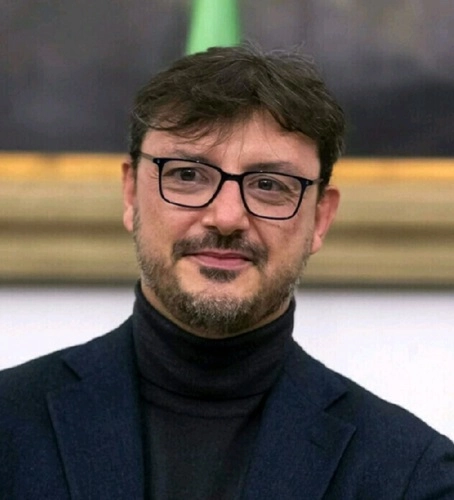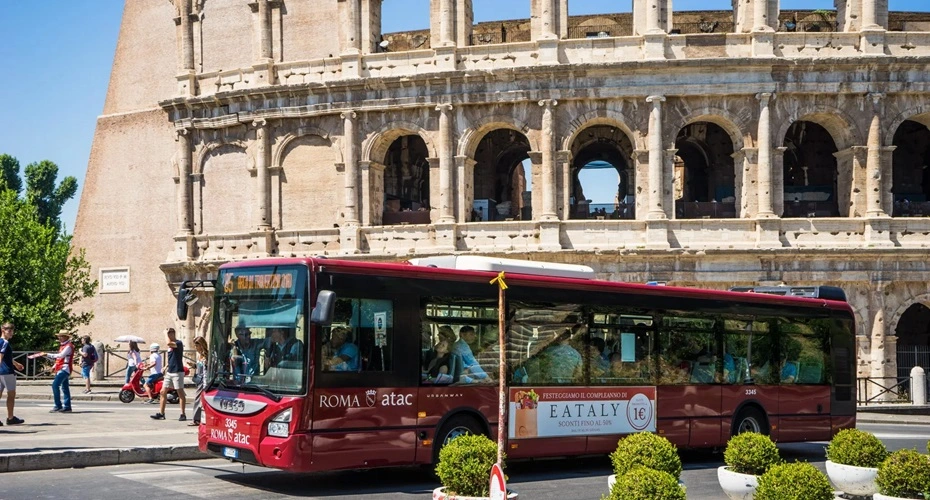Currently, Rome, the capital of Italy, has a large number of private combustion engine cars.
In this regard, it becomes essential to diversify modes of transportation to reduce dependence on personal vehicles.

“In the city, there are more cars than driving licenses, and it’s challenging to deal with this issue,” comments Eugenio Patanè, Deputy Mayor for Mobility in Roma Capitale, during the Tomorrow.Mobility World Congress (TMWC), an event covered by Mobility Portal Europe.
“We can change the culture of mobility, defeat the dictatorship of the car, and transition to the democracy of multimodality,” he adds.
Multimodality involves the integrated use of different modes of transportation, including cycling, walking, and passenger vehicles.
Here, zero-emission public transportation plays a fundamental role, especially considering that Rome plans to have a fleet of 1,500 electric buses by 2030.
Read more: Italy should add 1,000 electric buses per year to reach its goal
In this context, electromobility could be considered part of the solutions to reduce emissions and improve sustainability in transportation, contributing to the transition to a more equitable and environmentally friendly multimodality.
Addressing the fact that people prefer private cars over buses, the metro, or the tram, this is a problem that exists throughout Europe, as explained by the Deputy Mayor.
In this regard, Patanè proposes to increase the quantity and improve the quality of public transportation.
“We are working on it,” he clarifies.
“An incentive is to make the Metrebus not only useful for buses and the metro but also for all urban mobility, such as car-sharing and scooter-sharing,” indicates Patanè.
Electric bus projects in Rome
In the middle of this year, ATAC, Rome’s public transportation company and the main operator of urban mobility in Italy, launched a tender for up to 411 electric buses.
Of the total, 396 are 12-meter vehicles, and the remaining 15 are 18 meters.
The tender is partially funded by the company’s budgetary funds and partly by NextGenerationEU, the European Union’s economic recovery and transformation program.
The first lot has a base amount of 149.485 million euros, intended for the supply of 202 units of 12 meters, full service, the option of a possible additional annual mileage, and security expenses.
The second lot has a basic amount of 143.564 million euros, aimed at the supply of 194 12-meter buses, complete maintenance, added kilometers, and security.
Finally, the third lot is valued at 14.102 million euros, which will be allocated to the purchase of 15 vehicles of 18 meters, complete provision, and additional services.
On the other hand, in the middle of this year, Solaris Bus & Coach won the two lots of the competition called by Giubileo 2025 spa for a total of 110 articulated hybrid urban buses and up to 322 CNG vehicles.
It is worth mentioning that among the participants in this competition were also Iveco Bus and Mercedes Benz.
“Rome is in the midst of a revolution in terms of mobility because it is one of the largest cities in Europe,” acknowledges Patanè.
How to reduce the use of private and combustion engine cars?
To decrease the utilization of private and internal combustion engine vehicles, combat air and noise pollution in the city, Rome has implemented protective areas.
“We have 1,700,000 cars in our city, and that’s too much,” comments Patanè.
On one hand, there is the Low Emission Zone (ZTL), which covers the historic center of the city.
Within it, access for private vehicles not meeting the latest emission standards is restricted.
“It covers 18% of the city and is the largest in Europe, even bigger than Milan’s,” explains the Deputy Mayor.
Another measure to reduce the use of personal cars is the Congestion Charge (CCS).
This toll is applied to vehicles circulating in the center of Rome during peak hours.
Finally, there is a Limited Traffic Zone (ZTL), covering some areas outside the historic center, restricting access for private vehicles during certain hours of the day.
However, electric cars and those belonging to residents and workers are exempt from this restriction.
According to a study conducted by the Municipality of Rome, these measures have had a positive impact on the city’s air quality.
In 2023, nitrogen dioxide and fine particulate concentrations in the center of Rome decreased by 20% and 15%, respectively.
Patanè’s participation in the Tomorrow.Mobility.
At Tomorrow.Mobility, Patanè took part in the panel titled “Innovative Public Transport Changes For Climate-Neutral Cities.“
During the panel, representatives from the cities of Rome, Lisbon, Oslo, Bologna, along with the Director of Innovation from EIT Urban Mobility, discussed systemic approaches within the sibling projects UPPER and SPINE to rapidly increase the use of public transportation to become climate-neutral by 2030.
UPPER (Unleashing the Potential of Public Transport in Europe) is a Horizon Europe project that will run from January 2023 to December 2026.
Its aim is to strengthen the role of public transportation as a cornerstone of sustainable and innovative mobility.


The project will implement a combination of measures to reduce the use of private cars.
UPPER collaborates with ten cities and regions: Valencia, Rome, Île-de-France, Oslo, Mannheim, Lisbon, Leuven, Budapest, Thessaloniki, and the Hannover region.
Key milestones for UPPER include increasing the use of public transportation by more than 30% and user satisfaction by more than 25%.
Operationally, it will implement over 80 measures and act on five innovation models to positively influence user decisions: mindset and culture, urban mobility planning, mobility service ecosystem, road network management, and democratic governance.








